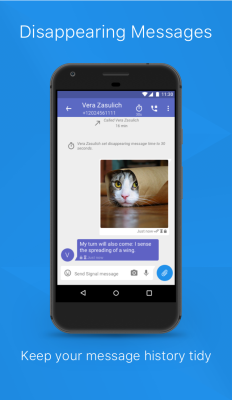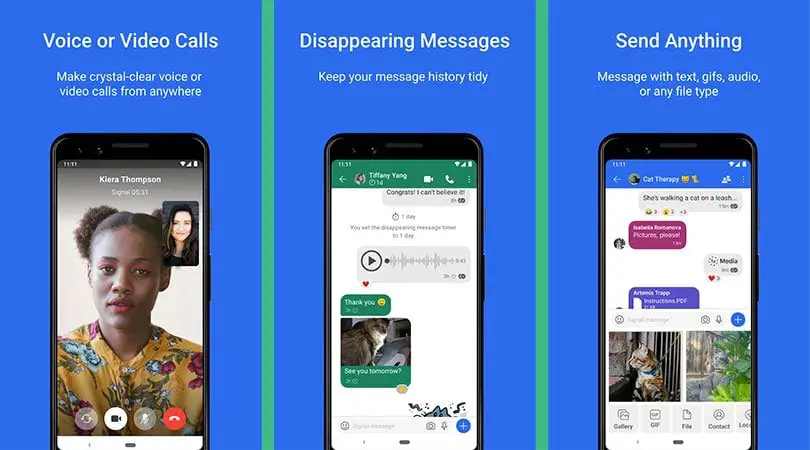

Network Status: On iOS, you can only communicate with other Signal users only.This is where you’ll find a comprehensive list of options – and it’s crucial to visit this segment of the app to enhance your privacy truly. To fine-tune your experience of using the app, you can click on your profile photo (in the top-left corner, from Signal’s home screen). You can also set your messages to disappear, mute all sounds, and finally block individual users. This is where you can check out the exchanged media, search your conversation, view a safety number (if you want to test the security of your end-to-end encryption). If you’d like to fine-tune a thread or a group, you can click on the contact’s or group’s name. In the top-right corner, you will be able to start a call by clicking on the ‘phone’ icon. At the bottom of the screen, you can compose a new message, insert stickers, send a photo, send an audio note, and you can also send a file, your location, and more. If you open any of these, you’ll get to see the data exchanged with the intended recipient. Once you open it, you’ll see a list of your messages – or threads, better said, that combine messages, photos, and calls. On iOS, it looks like just about any messaging app. What began as a fairly simple app for messaging quickly grew into a highly sophisticated app.


This means that during this legal battle, no PII (personally identifiable information) was revealed.ĭuring the last couple of years, Signal has been going through a revolution in terms of its UI. However, the official response said that Signal records only two types of data – “the date and time a user registered with Signal” and “the last date of a user’s connectivity to the Signal service”.

This subpoena forced Signal to reveal personal information about some of its users. In 2016, Signal received a subpoena from the Eastern District of Virginia. Additional inspections of the application’s code revealed no major flaws. Back in 2016, an independent audit of Signal concluded that the app’s protocol is ‘cryptographically sound’. So, should you be worried that Signal comes from the USA? Well, all evidence points to the app’s ultra-high protection of your privacy. When it comes to other channels of funding, Signal has previously received funds from a number of open-source projects, including LEAP, GlobaLeaks, and the Tor Project, among others. Acton continued his involvement with WhatsApp until 2017, before launching the Signal Foundation with Marlinspike (and contributing his own $50 million to the project). It’s interesting to note that Brian Acton co-founded WhatsApp, which was later acquired by Facebook in 2014 for $19 billion. When it comes to the Signal Foundation is a non-profit organization founded in 2018 by Moxie Marlinspike and Brian Acton with the goal of developing open source technology aimed at protecting free expression and secure communication.


 0 kommentar(er)
0 kommentar(er)
